Red light therapy is known for its great benefits, from boosting skin health to easing pain and helping muscles recover. But to get the best results, there's one important factor to know: irradiance. Irradiance is how much light energy is delivered to a certain area of your body. Too much or too little can affect how well the therapy works. This article explains what irradiance is and how to choose the right level for your needs.

What is Irradiance?
Irradiance is the measure of light power that penetrates a surface, expressed in mW/cm². In terms of red light therapy, irradiance corresponds to the amount of energy delivered to a specific part of the human body during a session. For instance, in a red light therapy device that radiates at 50 mW/cm², each square centimetre of skin that's irradiated receives 50 milliwatts of energy. This is a very important measure because it determines the dosage of the light energy that enters your body. Just as the proper irradiance is fundamental to the optimum dosage of irradiance, the right irradiance ensures the most optimal doses of light energy for an effective therapeutic effect.
What Common Misconceptions Exist About Irradiance in Red Light Therapy?
Misconception 1: Irradiance is Equivalent to Power Output
One common misunderstanding is confusing irradiance as a substitute for total power output. While total power output indicates the larger amount of energy emitted by a red-light therapy device, irradiance signifies exactly how much of that energy is concentrated on a certain area of the skin. For instance, if a light is distributed across a vast area, its irradiance may be low, even while its total power output is high.
Misconception 2: High Irradiance Can't Cause Harm
People may assume that since red light therapy is non-invasive, high levels of irradiance cannot cause harm. On the contrary, too much irradiance can lead to thermal damage, especially if the skin absorbs more energy than it can dissipate. There's a therapeutic window in which red light is beneficial, and exceeding that can negate the positive effects or even cause adverse reactions.
Misconception 3: Low Irradiance Can't Be Effective
Some believe that low irradiance levels are ineffective and dismiss any therapeutic value. On the contrary, certain conditions or treatments may benefit from lower, more gentle irradiance levels, especially over prolonged exposure times. It allows for a build-up of dose without the risk of overheating the skin.
What Is the Right Irradiance for Red Light Therapy?
The ideal irradiance for red light therapy typically ranges from 20 to 200 mW/cm². This range ensures the best therapeutic benefits with minimal risk of side effects. The right level depends on your treatment goals.
For skin care and anti-aging, it’s best to choose an irradiance range between 20 to 50 mW/cm². This level is gentle and effective for surface treatments such as reducing fine lines, improving skin texture, and stimulating collagen production.
For muscle recovery and pain relief, higher irradiance between 100 to 200 mW/cm² is more suitable. These higher levels penetrate deeper into the muscles and tissues, promoting faster healing and providing relief from soreness and inflammation.
In general, higher irradiance (100-200 mW/cm²) works well for deeper tissue treatments, offering shorter, more efficient sessions. Meanwhile, lower irradiance (20-50 mW/cm²) is better for sensitive areas like the face or for surface-level treatments, though it may require longer sessions for the desired results. This balance helps avoid irritation and ensures a comfortable experience.

Factors to Consider When Selecting Irradiance for Red Light Therapy
There are a lot of factors that should be taken into consideration while choosing the optimum irradiance level for red light therapy.
What Is Your Skin Type?
Your skin type will determine how much irradiance you can comfortably handle. Sensitive skin needs lower levels, while tougher skin can tolerate higher energy.
| Skin Type | Recommended Irradiance | Examples |
| Sensitive Skin | 20-50 mW/cm² | For the face, using red light therapy for wrinkles or skin texture improvement. |
| Tough Skin | 100-200 mW/cm² | For larger areas like the back, thighs, or muscle recovery after workouts. |
If you have sensitive skin, such as on your face, stick to lower irradiance (20-50 mW/cm²). For tougher skin, like on your back or thighs, higher irradiance (100-200 mW/cm²) will work better for muscle recovery or pain relief.
What Irradiance Is Best for Different Treatment Areas?
The size of the area you're treating affects the irradiance level you should choose. Smaller areas need gentler doses, while larger areas require higher levels for deeper penetration.
| Treatment Area | Recommended Irradiance | Examples |
| Small Areas | 20-50 mW/cm² | Face, neck, or sensitive areas, particularly for anti-aging treatments. |
| Large Areas | 100-200 mW/cm² | Back, legs, shoulders, or areas for muscle recovery and pain relief. |
For smaller areas like the face, use lower irradiance (20-50 mW/cm²). For larger areas like the back or thighs, higher irradiance (100-200 mW/cm²) is better to reach deeper tissues for faster healing.
How Do My Treatment Goals Impact Irradiance?
Your treatment goals will guide the irradiance level you need. Whether it's for skin care, muscle recovery, or pain relief, each goal requires a different approach.
| Goal | Recommended Irradiance | Examples |
| Skin Care & Anti-Aging | 20-50 mW/cm² | Wrinkle reduction, collagen stimulation, and skin texture improvement. |
| Muscle Recovery & Pain Relief | 100-200 mW/cm² | Muscle soreness after workouts, joint pain relief, or deep tissue healing. |
For skin care and anti-aging, lower irradiance (20-50 mW/cm²) is perfect for reducing wrinkles and stimulating collagen. For muscle recovery or pain relief, higher irradiance (100-200 mW/cm²) will penetrate deeper into muscles for quicker recovery.
Which Device Should I Use for the Right Irradiance?
The type of device you use affects the irradiance you can get. Choose one that matches your treatment area and goals.
| Device Type | Typical Irradiance Range | Best For |
| Handheld Devices | 20-50 mW/cm² | Localized treatments, like the face or small areas for anti-aging. |
| Panel Devices | 100-200 mW/cm² | Larger areas or muscle recovery, such as the back or thighs. |
Handheld devices usually offer lower irradiance (20-50 mW/cm²), ideal for small areas like the face. Panel devices provide higher irradiance (100-200 mW/cm²), better for treating larger areas or deep muscle recovery.
How to Practically Apply the Ideal Irradiance in Red Light Therapy
To get the best results from red light therapy, it’s important to use the correct irradiance for your treatment goals. Here’s a simple guide:
For Skincare & Anti-Aging:
Use 20 to 50 mW/cm². This level helps improve skin texture, reduce wrinkles, and stimulate collagen without causing irritation. Ideal for facial treatments and anti-aging purposes.
For Muscle Recovery:
Choose 100 to 200 mW/cm². This range penetrates deeper into muscles, speeding up recovery and reducing soreness after workouts. Great for large muscle groups like your back, legs, or shoulders.
For Pain Relief:
Go for 50-100 mW/cm². This level boosts blood flow, reduces inflammation, and eases pain. It works well for joint pain, muscle stiffness, or other targeted areas.
Start with lower irradiance and shorter sessions if you’re new to red light therapy. Gradually increase the time or irradiance level as your skin adjusts. This helps avoid overexposure and irritation while allowing you to fine-tune the treatment for the best results.
Get the Best Results from Red Light Therapy with the Right Irradiance
Red light therapy works wonders when you use the right irradiance level. For skin, muscles, or pain relief, starting with a lower irradiance and gradually increasing is the safest approach. The right balance ensures you get the best results without overdoing it. Make the most of red light therapy by choosing the right irradiance for your needs.



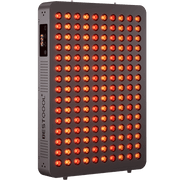









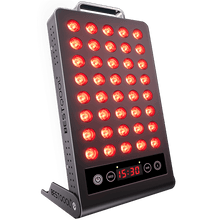
 Small
Small
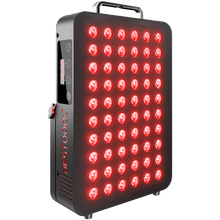
 Moderate
Moderate
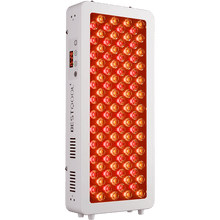
 Moderate
Moderate
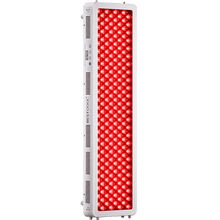
 Moderate
Moderate
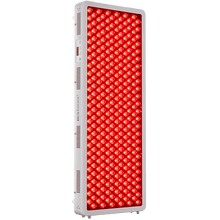
 Full
Full



